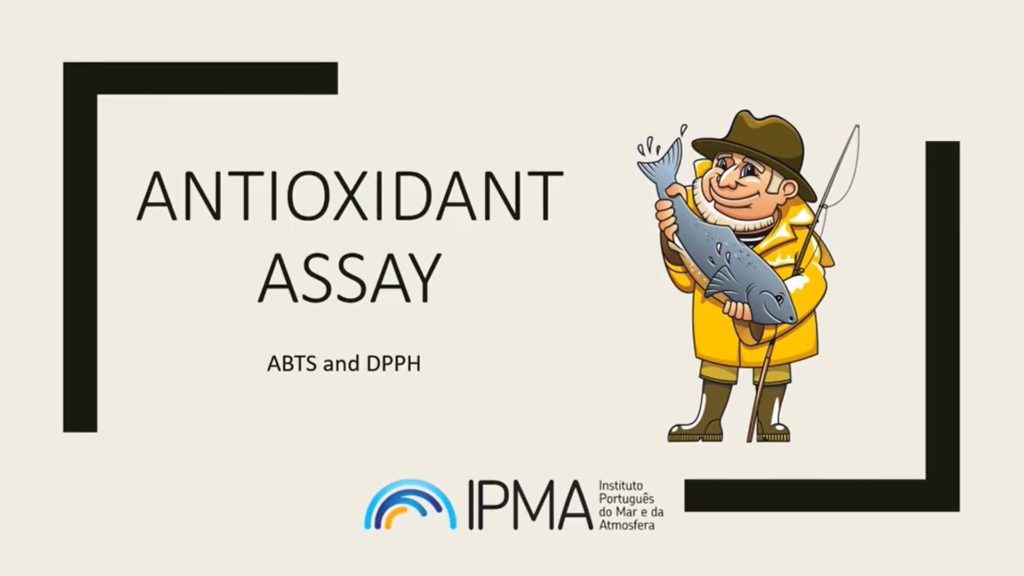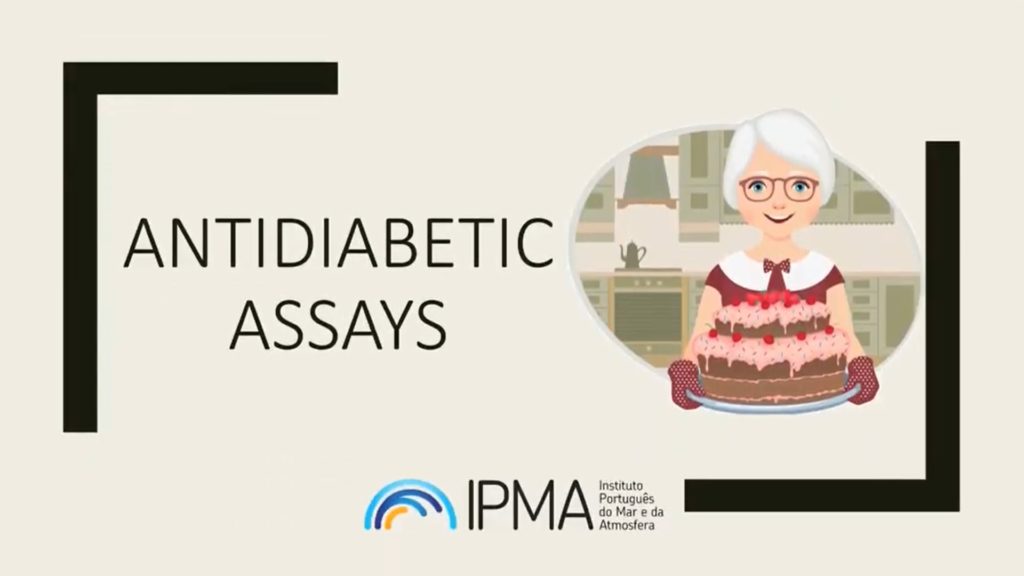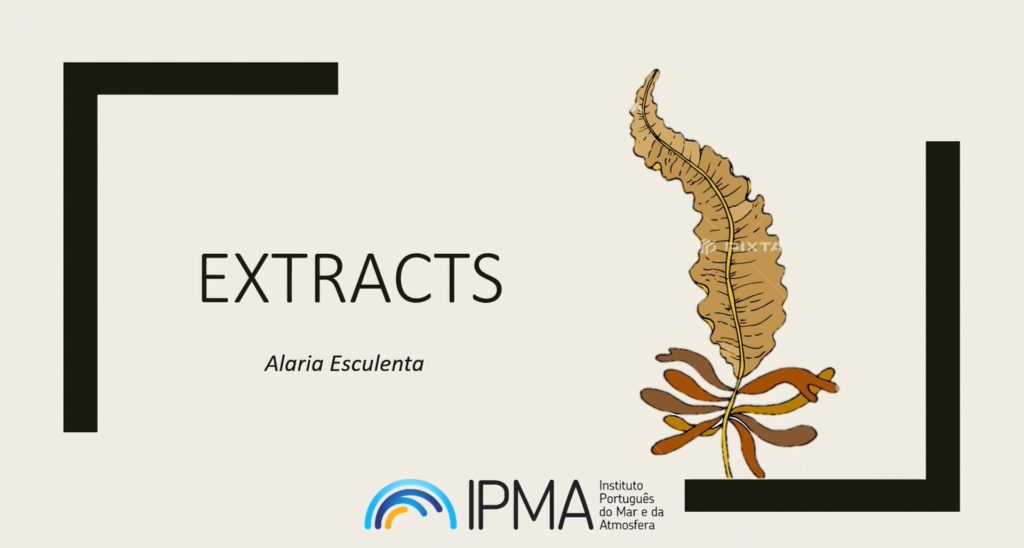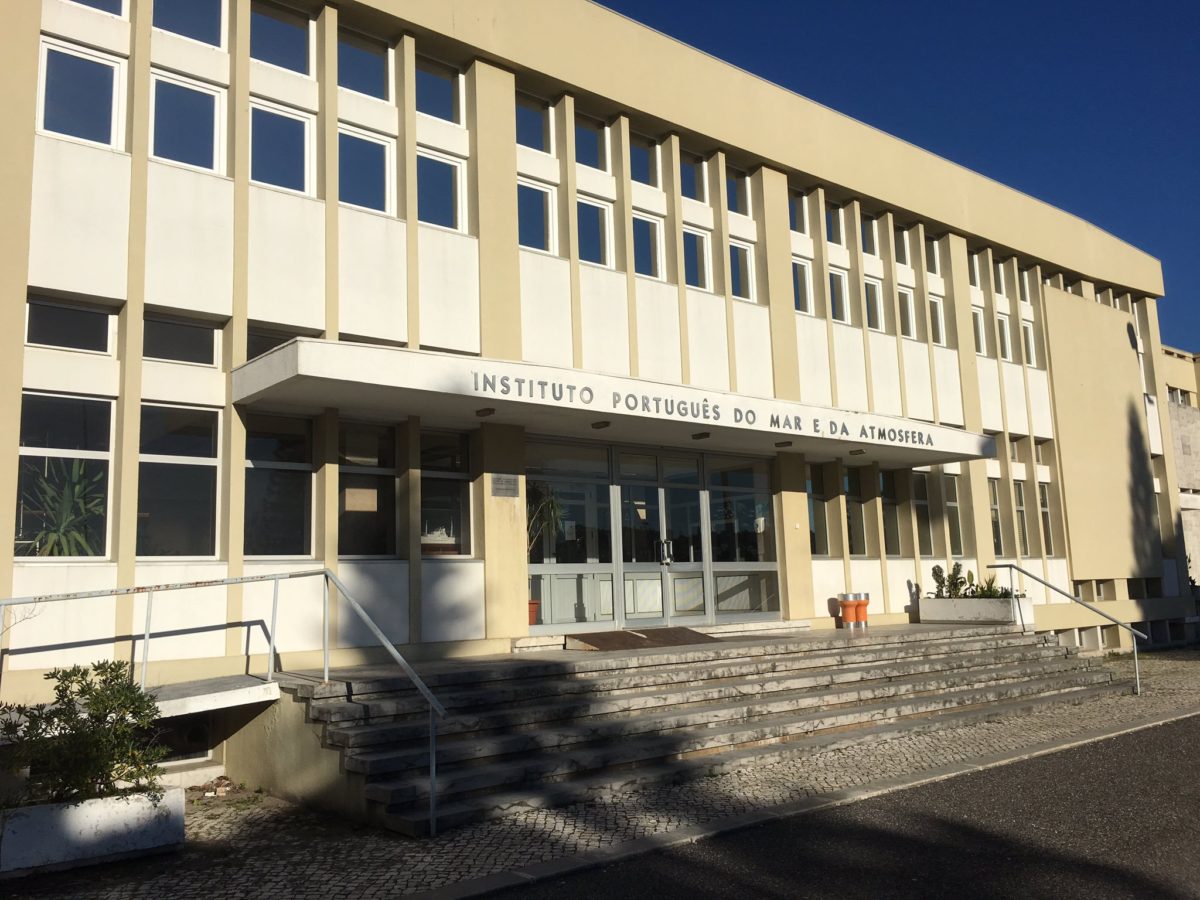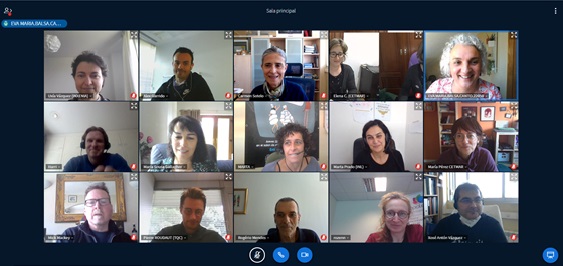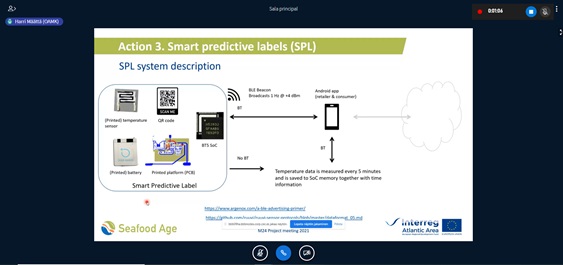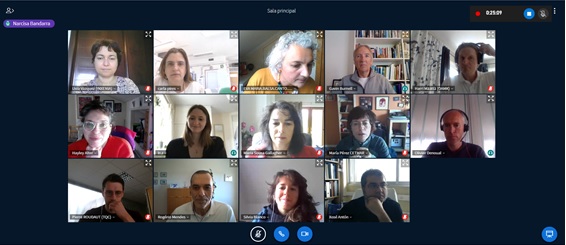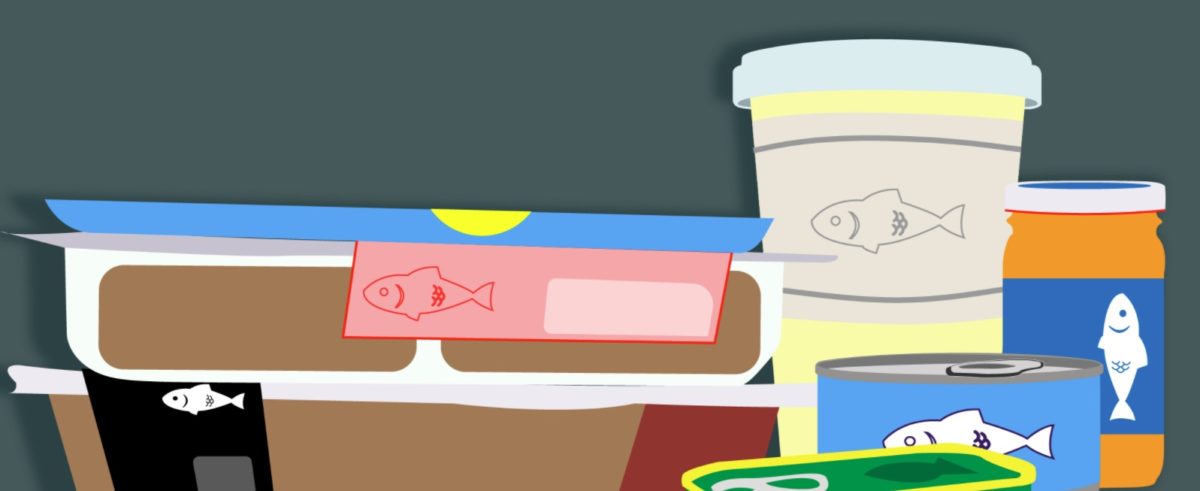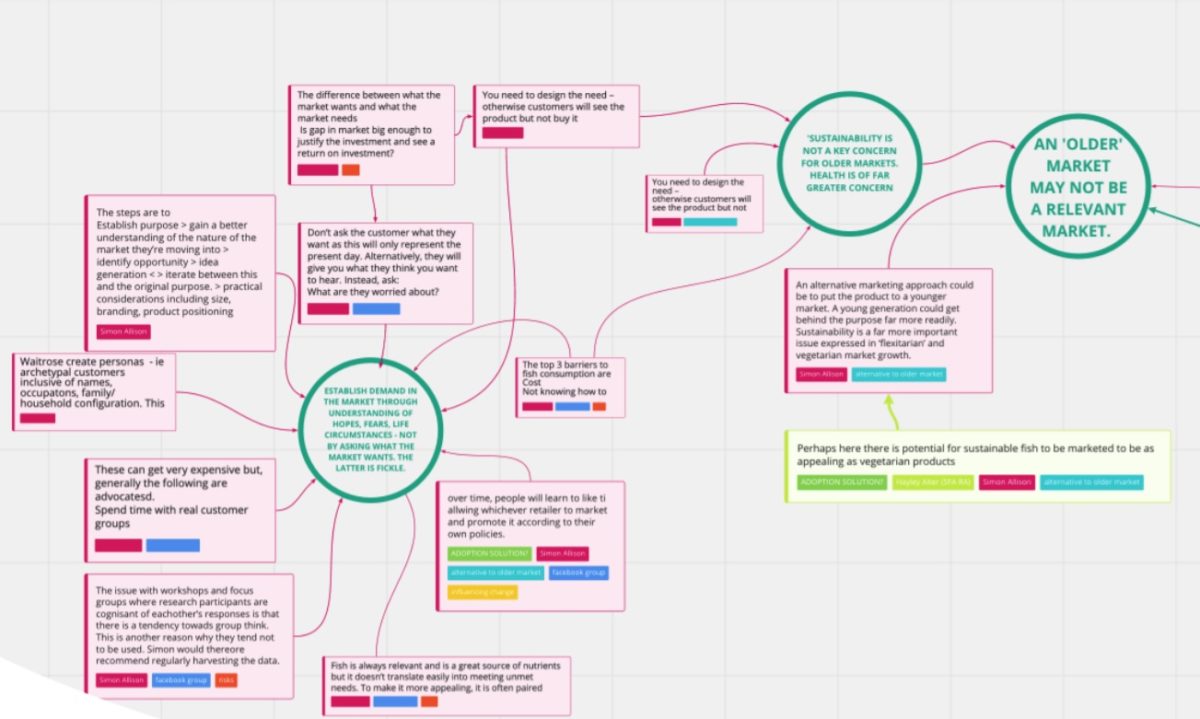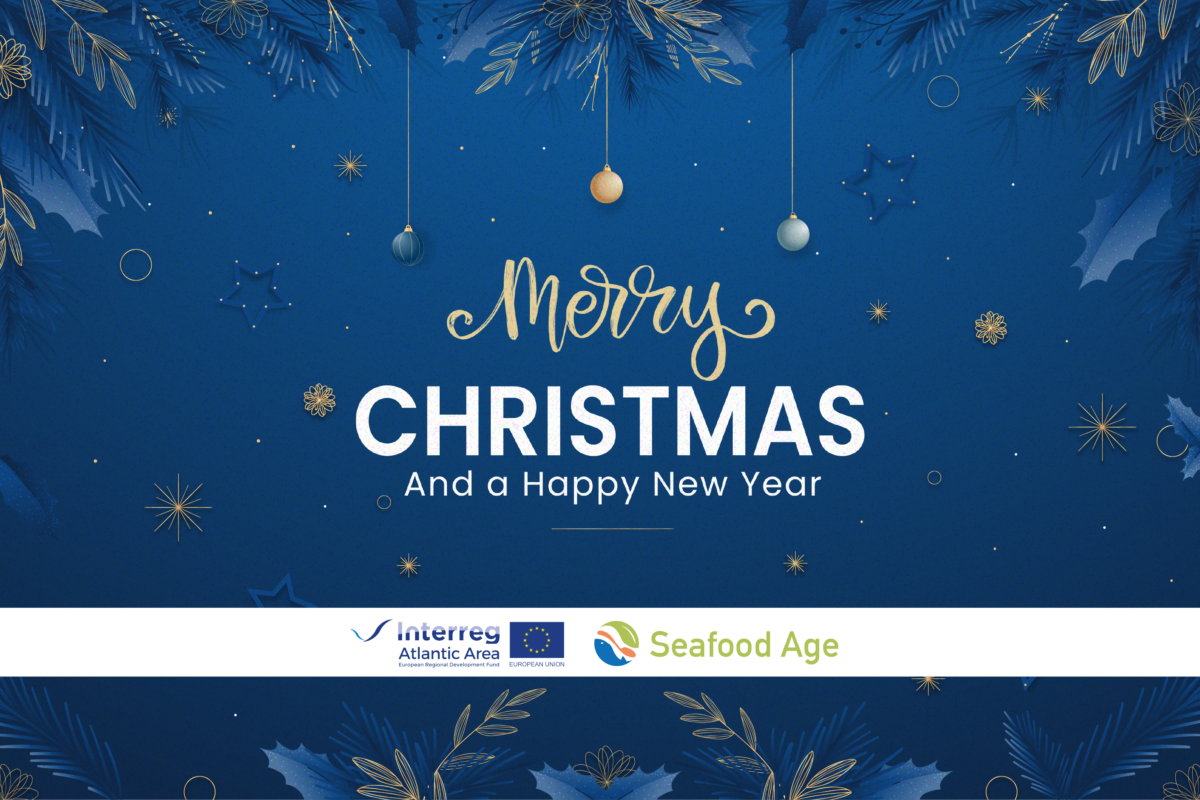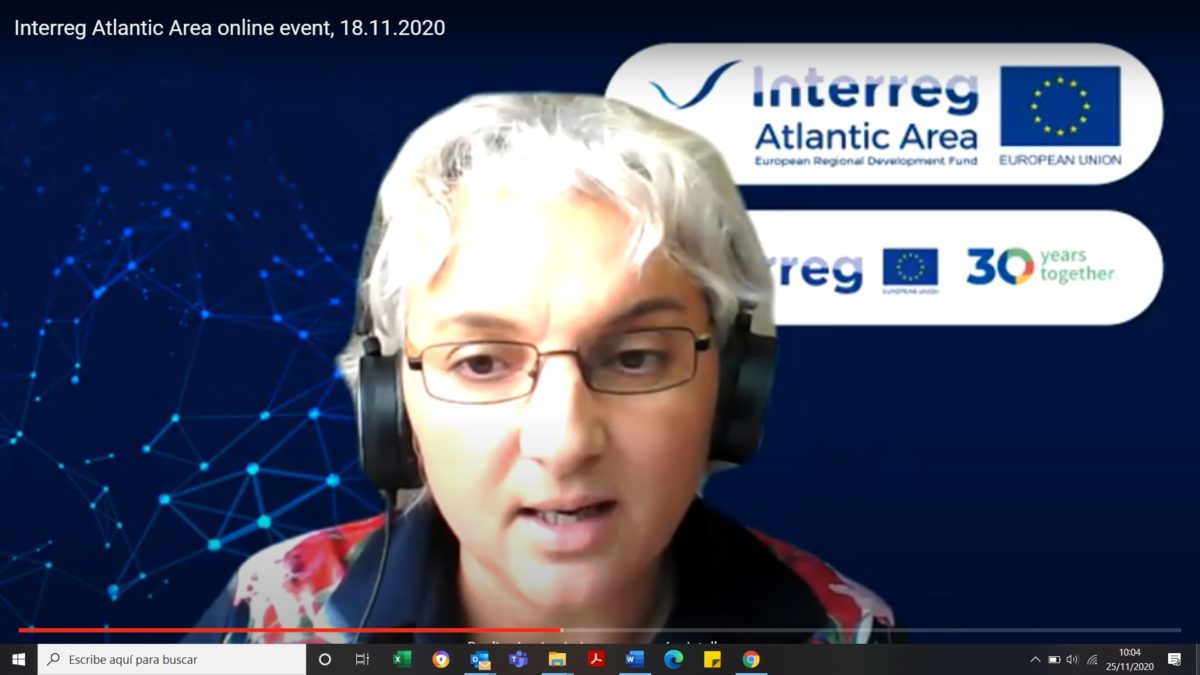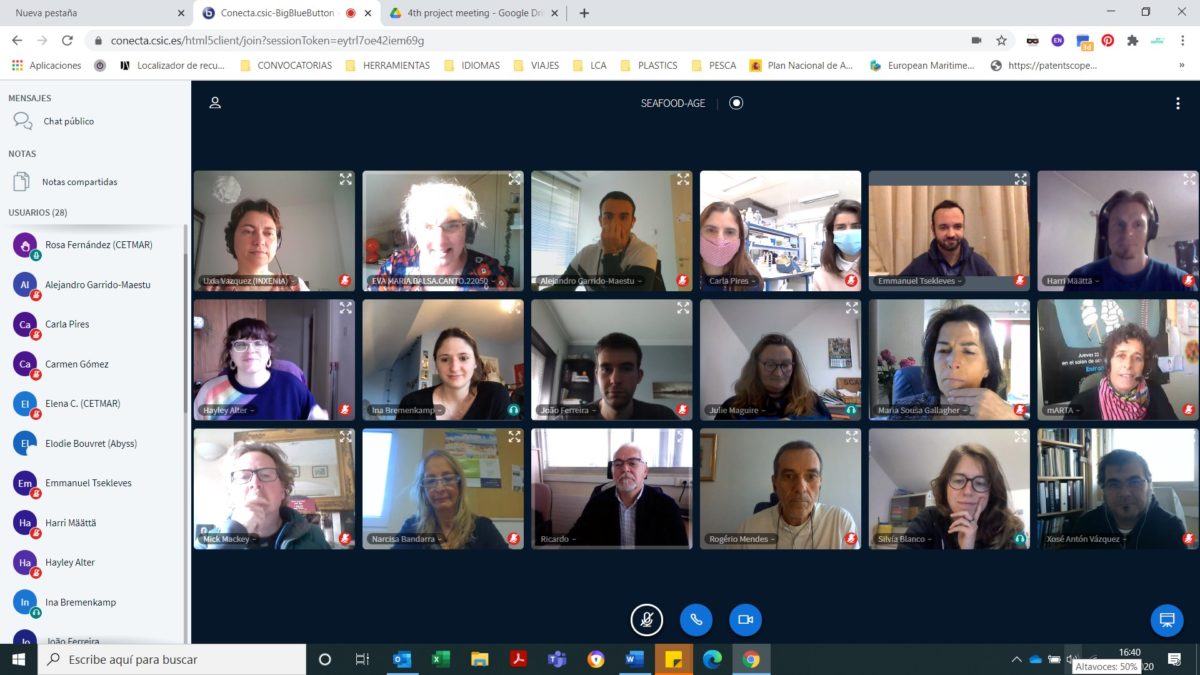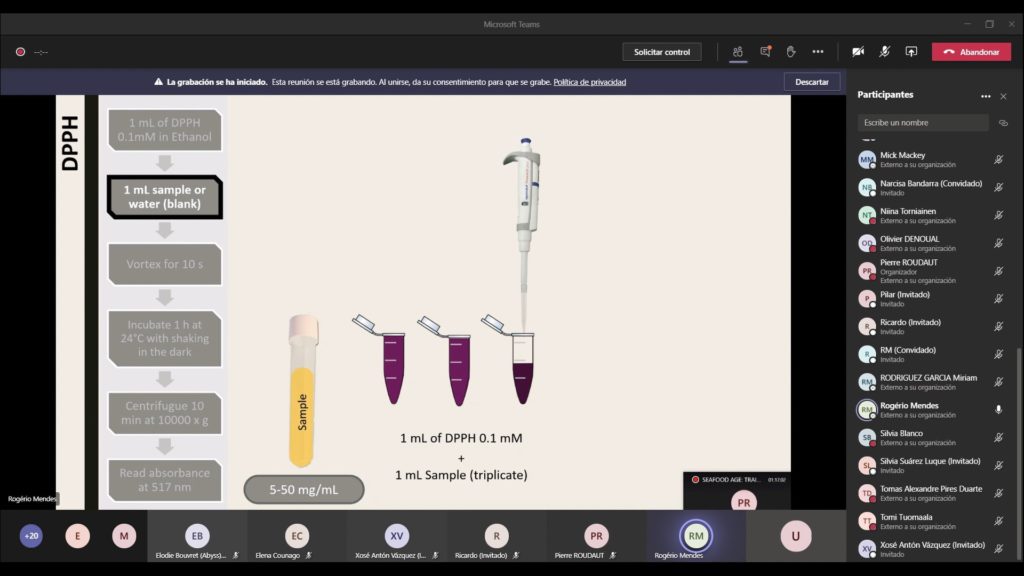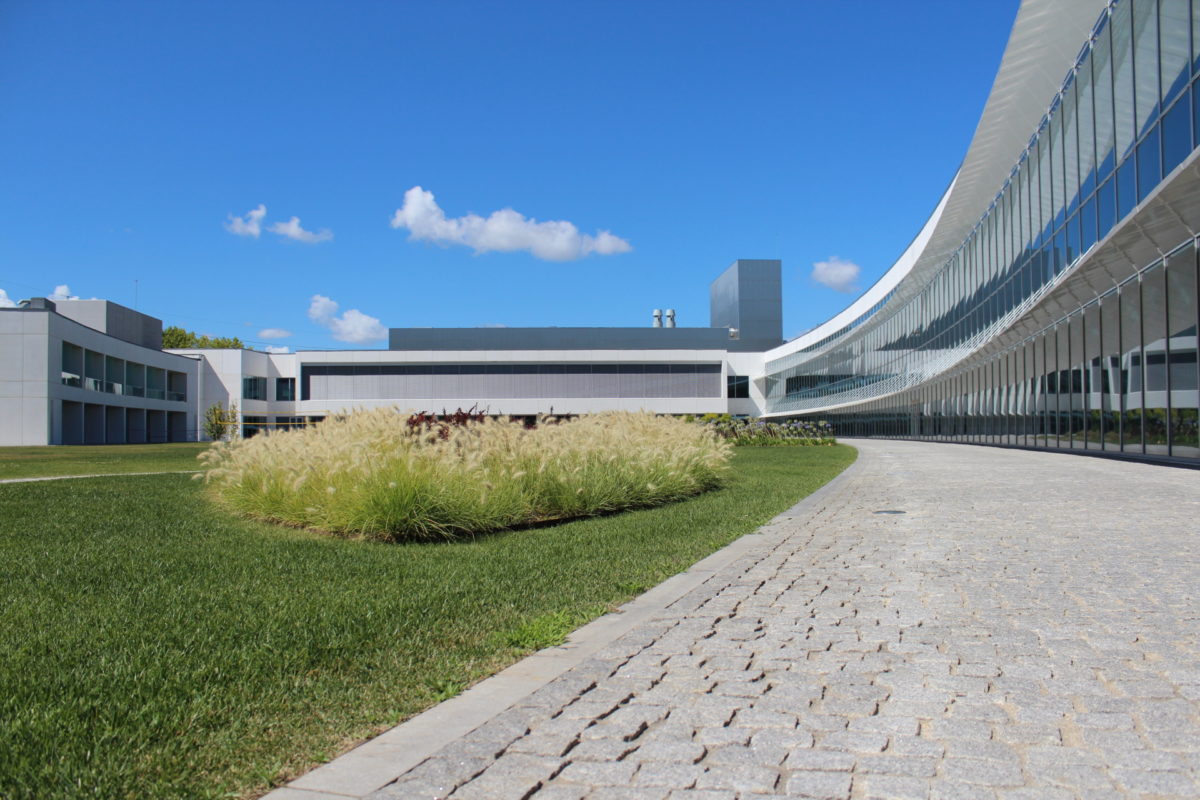During the 1st training session organised by TQC on 4th November, the Portuguese Institute of Sea and Atmosphere (IPMA) showed the different methods to assess the bioactivity of ingredients. This action was intended to familiarize the partners with techniques and processes that can be carried out at lab. IPMA’s presentation was supported by a series of video tutorials developed by them in the framework of SEAFOOD-AGE project.
Now, these videos are available through SEAFOOD-AGE Youtube channel for any researcher or technician interested in these techniques:
How to obtain extracts from the algae Alaria esculenta in the lab?
How to assay in the laboratory the reducing power of biological compounds?
How to assay in the laboratory the chelating activity of biological compounds?
How to assay in the laboratory the antioxidant activity of biological compounds?
How to assay in the laboratory the anti-obesity activity of biological compounds?
How to assay in the laboratory the anti-hypertensive activity of biological compounds?
How to assay in the laboratory the antidiabetic activity of biological compounds?





